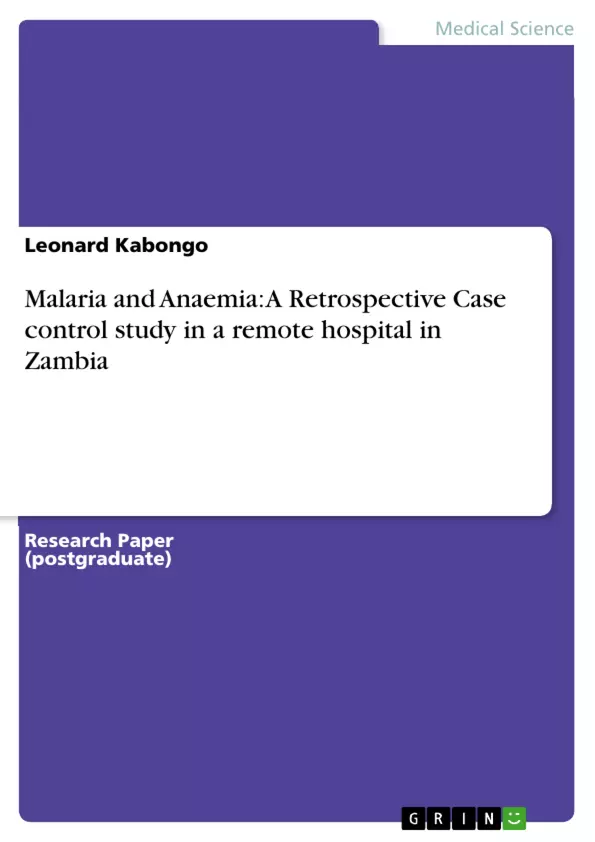Malaria is an endemic disease in Zambia and it’s a major public health problem in Africa, especially in the Tropics and developing countries. Malaria continues to place an unacceptable burden on health and economic development in over 100 countries across the world, with malaria mortality exceeding one million annually, primarily in children under five(3).
Efforts have been put in place over the years to reduce the high incidence and mortality rate due to Malaria. From pharmaceutical options reviews to environmental actions, governments and their stakeholders through the Ministries of Health in various countries affected by the endemic, have worked to initiate policies for a massive and effective disease control.
According to WHO, about 109 countries in the world are considered endemic for malaria,45 countries within the African continent.3,3 billion people were estimated to be at risk of malaria in 2006.Of this total,2,1 billion were at low risk(<1 reported case per 1000 population),97% were living in regions other than Africa. The 1, 2 billion at high risk (≥1 case per 1000 population) were living mostly in the WHO African (49%) and South-East Asia regions (37%)(18).In the same report, there was an estimated death of 881,000(610,000-1,212,000) due to malaria in 2006, of which 91%were in Africa and 85% were of children under 5 years of age. (Table 1).
Inhaltsverzeichnis (Table of Contents)
- 1. INTRODUCTION
- 1.1. Situation analysis
- 1.2. Objectives
- 1.3. Material and methods
- 2. EPIDEMIOLOGIC DETERMINANTS
- 2.1. Definition
- 2.2. Epidemiologic triad
- 2.3. Clinical manifestations
- 2.4. Treatment
- 3. MALARIA INCIDENCE
- 4. MALARIA AND ANAEMIA
- 4.1. Malaria and anaemia
- 4.2 Relative risk, Odds ratio, p-value
- 4.2.3 Control of confounding
- 5. PREVENTION
- 6. CONCLUSION
- 7. REFERENCES
Zielsetzung und Themenschwerpunkte (Objectives and Key Themes)
This retrospective case control study aims to investigate the relationship between malaria and anemia in a remote hospital in Zambia. The study aims to analyze the epidemiological determinants of malaria associated with anemia, present and discuss epidemiological elements in the context of a case control study, analyze the effectiveness of prevention and control measures, and provide a data analysis of the collected information.
- The relationship between malaria and anemia
- Epidemiological determinants of malaria and anemia
- Effectiveness of prevention and control measures
- Data analysis of malaria and anemia cases
- The role of the epidemiologic triad in malaria transmission
Zusammenfassung der Kapitel (Chapter Summaries)
- Chapter 1: Introduction
- Provides an overview of the situation analysis, highlighting the endemic nature of malaria in Zambia and its impact on public health.
- Outlines the objectives of the study, focusing on understanding the epidemiological determinants of malaria associated with anemia, analyzing the magnitude of anemia in malaria cases, and assessing the effectiveness of prevention and control measures.
- Describes the methodology employed, including the use of retrospective case control study data collected from a remote hospital in Zambia over a one-year period.
- Chapter 2: Epidemiologic Determinants
- Defines malaria as a protozoan disease caused by infection with parasites of the Plasmodium genus and transmitted by infected female Anopheles mosquitoes.
- Introduces the epidemiologic triad, highlighting the interconnected roles of the host, agent, and environment in malaria transmission.
- Chapter 3: Malaria Incidence
- Presents data on the incidence of malaria in Zambia, emphasizing the high prevalence of malaria among children under five years old.
- Discusses the geographical distribution of malaria, highlighting the higher prevalence in rural areas compared to urban areas.
- Chapter 4: Malaria and Anemia
- Examines the relationship between malaria and anemia, analyzing the potential mechanisms by which malaria can contribute to anemia.
- Explores the use of statistical measures like relative risk, odds ratio, and p-value to assess the association between malaria and anemia.
- Chapter 5: Prevention
- Discusses strategies for preventing malaria, including the use of insecticide-treated nets, antimalarial drugs, and environmental control measures.
- Highlights the importance of public health initiatives and community involvement in malaria prevention.
Schlüsselwörter (Keywords)
This study focuses on the epidemiology of malaria and anemia in Zambia, specifically analyzing the relationship between these two conditions and the effectiveness of prevention and control measures. The study employs a retrospective case control methodology to analyze data collected from a remote hospital in Zambia. Key terms include malaria, anemia, epidemiologic determinants, case control study, prevention, control measures, and Zambia.
- Quote paper
- MD,MPH Leonard Kabongo (Author), 2010, Malaria and Anaemia: A Retrospective Case control study in a remote hospital in Zambia, Munich, GRIN Verlag, https://www.grin.com/document/171547



